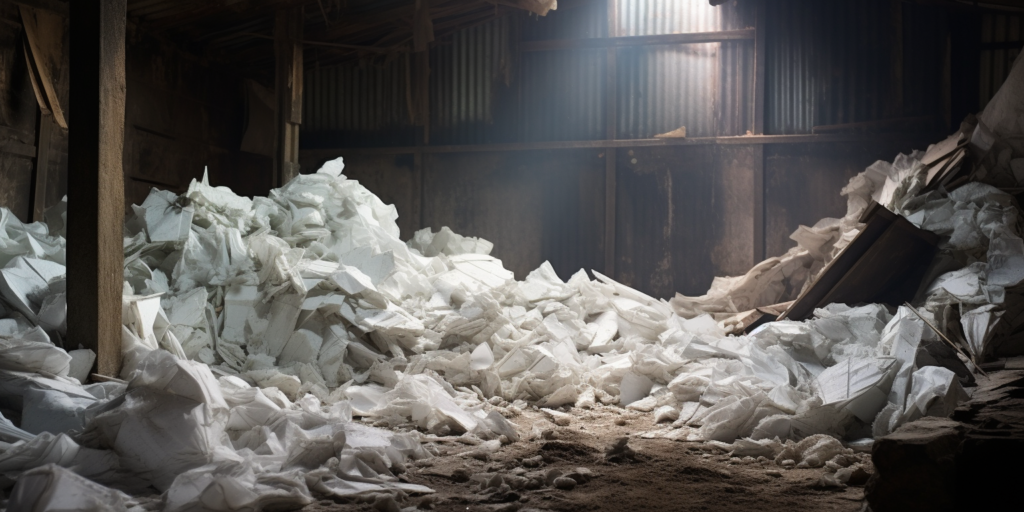Asbestos is a natural mineral that is composed of long, thin fibers. Asbestos has excellent insulating and fire-resistance properties, and it was extensively mined and used as a building material from the late 1800s through the 1970s.
In the 1970s, people finally realized that inhaling asbestos fibers was harmful. Exposure to asbestos fibers causes serious lung damage, a condition called asbestosis, and it also causes mesothelioma, a lethal type of cancer.
Although asbestos has been banned in some countries, it is still being mined and used as a building material in many parts of the world. Even in countries where it has been banned for years, practically every building constructed pre-1980 contains asbestos. It was used to make fireproof and heat-resistant drywall, flooring, roofing, coatings, concrete, bricks, pipes, and insulation, among other products.
One ongoing controversy is whether asbestos should be actively removed and replaced, or just left alone. The key point of this argument is that asbestos is only harmful if inhaled. Thus, some people believe that leaving pre-existing building materials containing asbestos in place will cause no harm. However, others disagree.
1. The material Can Deteriorate
Although asbestos is a natural mineral and lasts forever, products constructed out of asbestos do not. Products containing asbestos will deteriorate over time, releasing the dangerous asbestos fibers into the air where they can be inhaled. Fire-retardant spray coatings, pipe insulation, and asbestos insulating board (AIB) are thought to be the most dangerous materials because they have a very high asbestos content and easily break apart into loose fibers.
2. The material Can Be Disturbed
If the asbestos is in an area likely to be disturbed by future maintenance or remodeling, it should be removed. Saws, sanders, and demolition to make way for new materials will release clouds of asbestos fibers into the air. The parts of a home that are most often remodeled are the kitchen and bathrooms, followed by bedrooms and the living room. Unfinished basements are not a safe place to hide asbestos because many homeowners opt to turn the basement into part of the living space. Failing to remove asbestos from often-renovated parts of a house can reduce the resale value of the home.
3. Asbestos Fibers Can Spread Everywhere
Even if asbestos materials are confined to areas within walls or crawlspaces, asbestos fibers can escape and enter the occupied parts of the home. This problem was clearly demonstrated in the notorious Mr. Fluffy houses in Australia. In the 1960s and early 1970s, thousands of houses in Australia had their attic space pumped full of asbestos-containing insulation by the Mr. Fluffy company. Although the fibers were touted to remain in place “forever,” they made their way into the rest of the house on air currents. Australia currently has one of the highest rates of mesothelioma in the world, at 1.3 age-standardized cases per 100,000 persons. The global mean age-standardized case rate is 0.3 cases per 100,000 persons.
If you discover there is asbestos in a building and decide to have it removed, keep in mind that this is not a DIY project. Materials containing asbestos must be removed by a certified asbestos-removal contractor. Asbestos is at its most dangerous while it is being removed because the disturbed materials can easily release large amounts of fibers if they are not handled properly.




